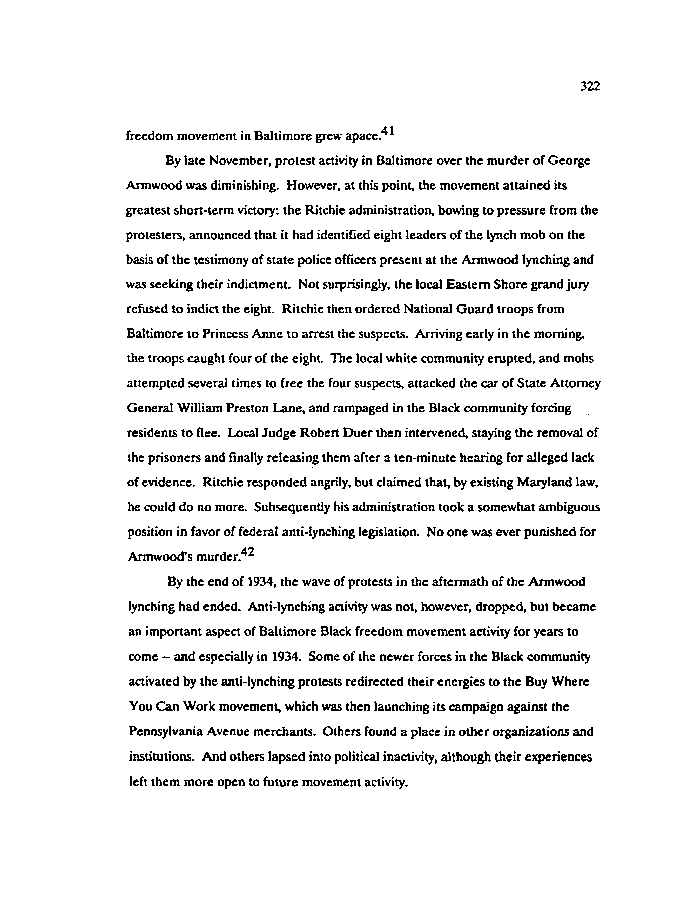|
322
freedom movement in Baltimore grew apace.
By late November, protest activity in Baltimore over the murder of George
Armwood was diminishing. However, at this point, the movement attained its
greatest short-term victory: the Ritchie administration, bowing to pressure from the
protesters, announced that it had identified eight leaders of the lynch mob on the
basis of the testimony of state police officers present at the Armwood lynching and
was seeking their indictment. Not surprisingly, the local Eastern Shore grand jury
refused to indict the eight. Ritchie then ordered National Guard troops from
Baltimore to Princess Anne to arrest the suspects. Arriving early in the morning,
the troops caught four of the eight. The local white community erupted, and mobs
attempted several times to free the four suspects, attacked the car of State Attorney
General William Preston Lane, and rampaged in the Black community forcing
residents to flee. Local Judge Robert Duer then intervened, staying the removal of
the prisoners and finally releasing them after a ten-minute hearing for alleged lack
of evidence. Ritchie responded angrily, but claimed that, by existing Maryland law,
he could do no more. Subsequently his administration took a somewhat ambiguous
position in favor of federal ami-lynching legislation. No one was ever punished for
Armwood's murder. ^
By the end of 1934, the wave of protests in the aftermath of the Armwood
lynching had ended. Ami-lynching activity was not, however, dropped, but became
an important aspect of Baltimore Black freedom movement activity for years to
come — and especially in 1934. Some of the newer forces in the Black community
activated by the ami-lynching protests redirected their energies to the Buy Where
You Can Work movement, which was then launching its campaign against the
Pennsylvania Avenue merchants. Others found a place in other organizations and
institutions. And others lapsed into political inactivity, although their experiences
left them more open to future movement activity.
|

